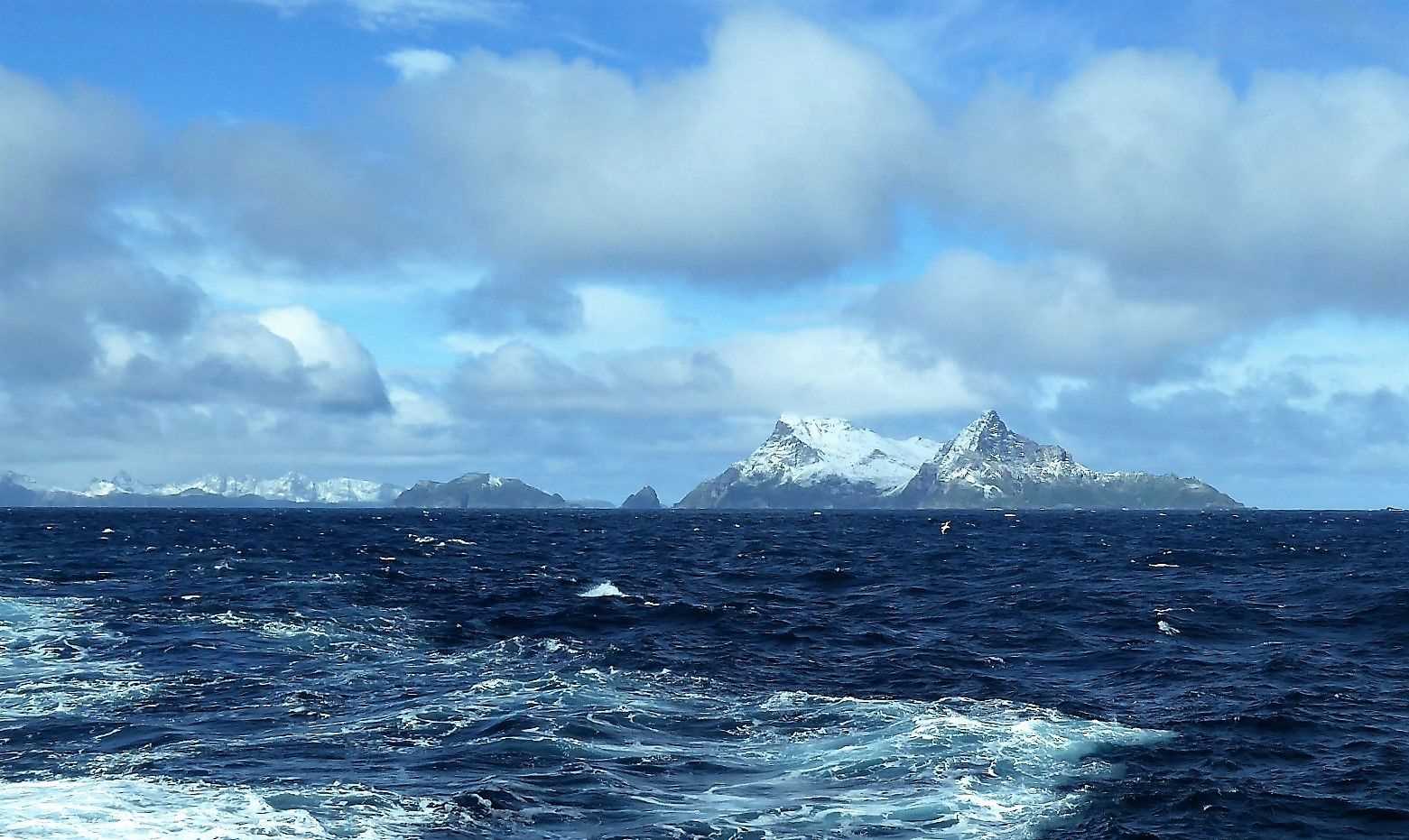We spent a quiet night tucked within the shelter of Rosita Bay, a nifty pocket located at the west end of the Bay of Isles. South Georgia has surely lived up to the old adage of adverse voyaging in which “king weather rules these latitudes with a ruthless despotism.” At one moment one would feel the ship vaulting up as it rolled through the big swells, with the next bringing visibility down to a few measly yards in the onset of a blizzard, only to then let off to a sky lustrous as that of a sapphire.
The wildlife out here is as breathtaking as you might expect; the gray blade-like silhouette of the Antarctic prions, the white-chinned petrels sweeping in arcs above the waves.
Just as breakfast was announced, a blue whale was spotted crossing our track! The announcement created a small frenzy as the bridge filled with eager folks readying their cameras as quickly as possible.
Come mid-morning, we made our final landing on the South Georgian shore at the sheltered bay of Elsehul, near the northwestern tip of the island. Once the Zodiacs were boarded, we scattered throughout the bay. Everywhere fur seals and overhead albatrosses coming into their nesting sites.
There is much to see here: a colony of Macaroni penguins above a steep rock climb, a beach heaped full with moulting elephant seals, busy snowy sheathbills pecking away at the exposed seaweed tresses.
At our main landing zone, we encountered a team of archaeologists surveying the area around three try pots (drums once used for rendering the oil from whale blubber) that have been there for many decades over. They are relics of the sealers who harvested elephant seals here 150 years ago.
We turned away on a new course for the Falklands, passing the dramatic Willis Islands that were first sighted by Midshipman Willis on board Resolution, led by Captain James Cook in 1775.
Such rich history amidst the backdrop of an even richer world, one filled of some of the starkest natural habitats and species.







